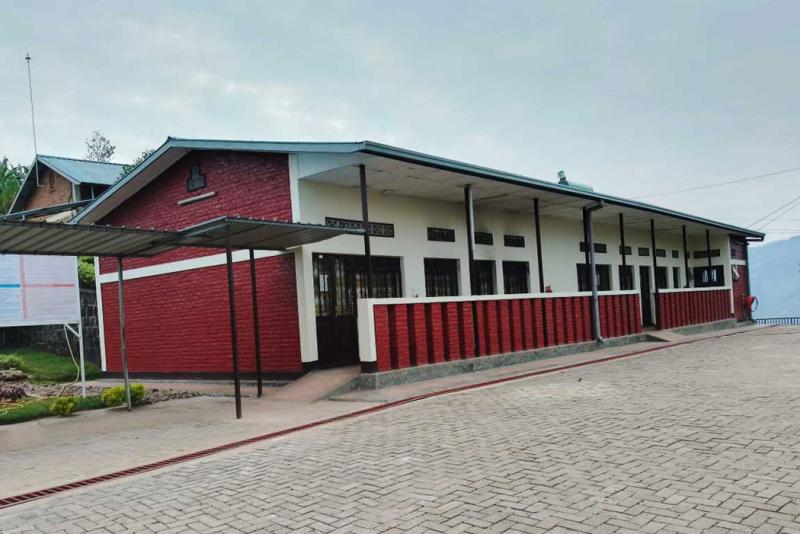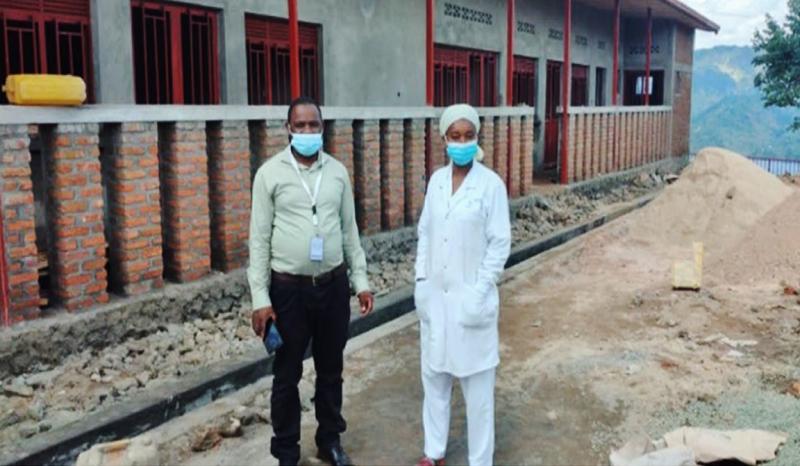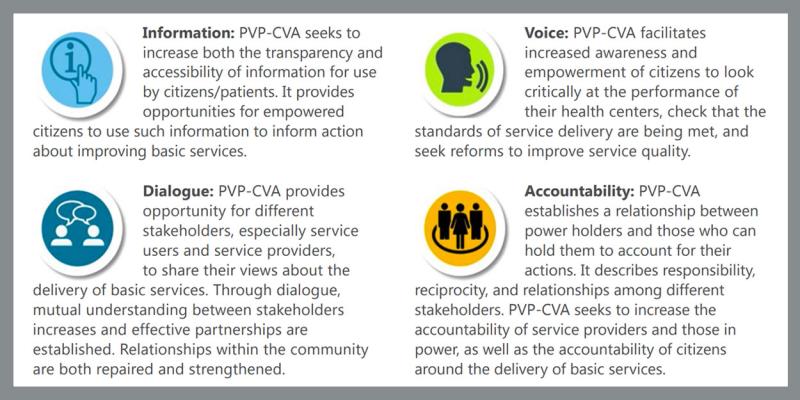Where We Work
See our interactive map


The new maternity unit at Gashaki Health Center. Photo courtesy Mathieu Niyonkuru
An innovative approach is helping community members, health workers, and local leaders improve maternal care.
For years, maternity services at Gashaki Health Center in Rwanda’s Muzanze District were hindered by poor infrastructure, congestion, and a lack of community participation.
“We had such a small delivery room that we couldn't accommodate more than two women at the same time,” says Sylvain Ndagiwenimana, the health center manager. “This lack of space contributed to an increase in home deliveries.”
Now clients and community members have a say in the type and quality of services they receive.
Lack of space contributed to an increase in home deliveries.
The USAID-funded Ingobyi Activity, led by IntraHealth International, used a Patient Voice Program–Citizen Voice and Action (PVP-CVA) approach to enhance service quality at the health center. PVP-CVA gives health facity leadership and districts insights into how the community views the services they provide and offers community members the opportunity to participate in efforts to improve service delivery.
After a January 2019 data review and analysis showed the health center was consistently under-performing in most indicators related to reproductive, maternal, newborn, and child health (RMNCH) and malaria, Ingobyi targeted Gashaki Health Center with the PVP-CVA intervention.
In May 2019, Ingobyi organized a “scorecard meeting” with community members, health workers from the health center, and some of the district leaders. Community members listed services they received at the health center and ranked their quality. One of the issues that stood out was the old maternity unit, which didn’t provide a comfortable place for delivery or postpartum stay.
Women are now happy to deliver in the new maternity unit.
The meeting participants agreed the facility needed a new maternity unit and formally advocated to district leaders to provide the funds for a new building. In December 2019, district leaders promised to allocate funds in the next fiscal year budget to build a new, modern maternity unit at the health center.
Construction began in November 2021 and the new maternity unit opened its doors in August 2022. Since completion, 330 women have delivered their babies in the new maternity ward.
“The new maternity unit offers much space and ensures privacy to our clients,” Ndagiwenimana says. “Women are well received and are happy to deliver in this new unit. The average quality score for maternity services has increased from 81% in 2021 to 100% in 2023.”

A nurse (right) and Ingobyi Activity staff member (left) visited the new maternity unit while it was under construction. Photo by Bosco Bazimaziki for IntraHealth International
This is just one result of the PVP-CVA approach, and shows what can be achieved when communities, health workers, and local leaders come together.
The approach came into being back in September 2018. That was when the Ministry of Health introduced the Patient Voice Program (PVP) initiative in administrative sectors to promote interaction between health workers and patients to ensure continuous improvement in quality of care. Around the same time, Ingobyi introduced the Citizen Voice and Action (CVA) approach with an added aspect of engaging local government and community members in dialogue with health workers to find solutions to health system challenges. The ministry and Ingobyi integrated the two initiatives with the aim of strengthening community participation in improving the quality of RMNCH and malaria services.
When Ingobyi applies the PVP-CVA approach, community members learn about health as a basic human right, and work collaboratively with leaders and health workers to compare their reality against the government’s commitments to universal health coverage. The approach enables joint action planning to address structural, policy, and service delivery gaps.

Four elements of the PVP-CVA approach
Ingobyi created a PVP-CVA user manual and has used it to orient more than 850 district leaders across 20 districts on the approach and to establish and train 245 PVP-CVA working groups with 4,827 members. The working groups have supported 267 health centers, under the supervision of Ingobyi staff and district health leaders, and have facilitated community meetings involving 17,527 community members to gather community feedback on RMNCH and malaria services.
At least 64% of the gaps identified from the community meetings have been resolved, including absence of nurses during break hours, uncleanliness due to insufficient sanitation materials, poor customer care, lack of privacy in maternal units, and delay in receiving patients and offering services. Ingobyi is urging district and central leaders to address the remaining issues that have been raised by communities.
Read more about Ingobyi Activity’s PVP-CVA approach here.
Get the latest updates from the blog and eNews




